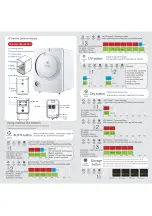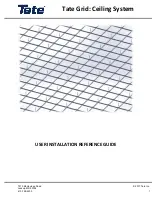
Figure 3.
Moving Switchgear with Jacks and Rollers
Figure 4
shows a method of moving the switchgear into the
final position, after it has been moved near to the final position
using another method.
Figure 4.
Moving Switchgear in Obstructed Areas without a
Crane—Final Positioning
Outdoor Switchgear
The method of lifting non-walk-in or Shelter-Clad outdoor
equipment is shown in
Figure 5
. The load angles (from hori-
zontal) on the lifting cables, as viewed from the front or rear,
must be at least 45 degrees. A lesser angle could damage the
equipment. The lifting cables must have spreaders front to
back and side to side to protect the equipment.
The recommended lifting pipe size (Ref. ASTM A-53) is type
XXS 2-1/2” nominal (2.875” (73mm) OD, 1.771” (45mm) ID).
The lifting pipe should be at least 18” (457mm) longer than the
depth of the switchgear, and should include adequate means
to prevent the lifting cables from slipping off of the lifting pipe
during use.
Figure 6
shows a method of using jacks on outdoor switchgear
to facilitate the use of rollers under the shipping skid. Care
must be used with this method to prevent damage to the
doors and to maintain stability of the timbers. Refer to previous
section for additional information.
Figure 5.
Lifting Outdoor Switchgear with Crane
Figure 6.
Moving Outdoor Switchgear with Jacks and Rollers
CABLE LOOP
OR JACK HOOK
JACK
ROLLERS
LIFT PIPE
SPREADER
BEAM
LIFT POINT TO BE AS CLOSE
TO CUBICLE AS POSSIBLE TO
AVOID OVER STRESSING LIFT PIP
2" (51mm) MAXIMUM UNIT TO CABLE
DOOR
EAR
NE.
DISTRIBUTE
FORCE EVENLY
UP T
O 6"
4"
FIXED SWITCHGEAR
SLIDE CAREFULLY UP
ON SMOOTH, UNOBST
TIE DOWN
LIFT BEAM
BANDING
JACK BEAM
SUPPORT TIMBERS
ROLLERS
PROVIDE
SUITABLE
PROTECTION
FOR CORNERS
JACKS
Receiving, Handling & Storage
7










































